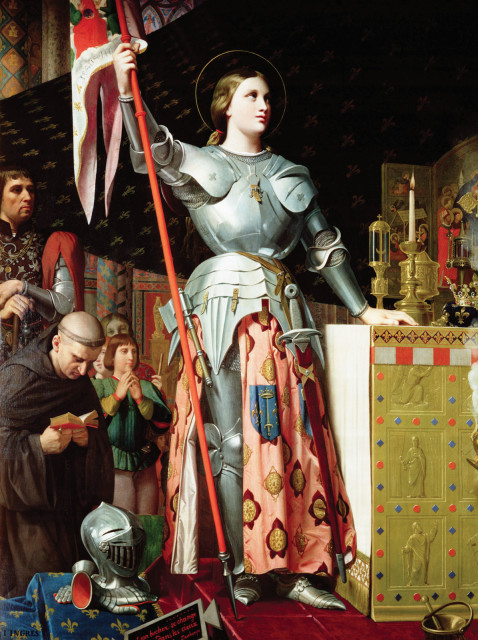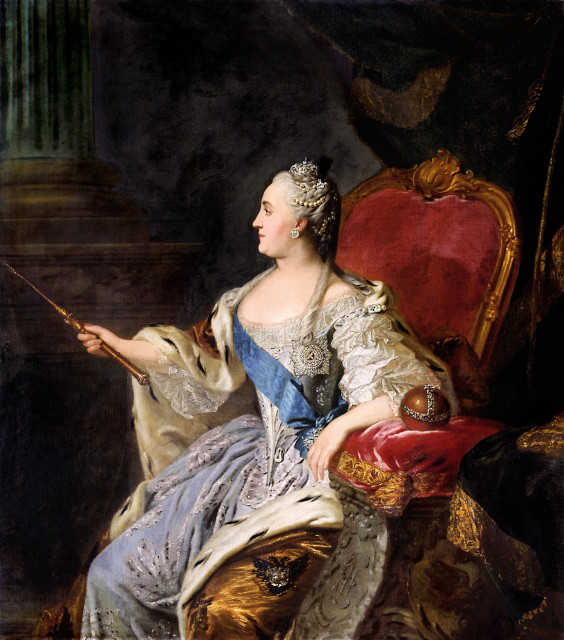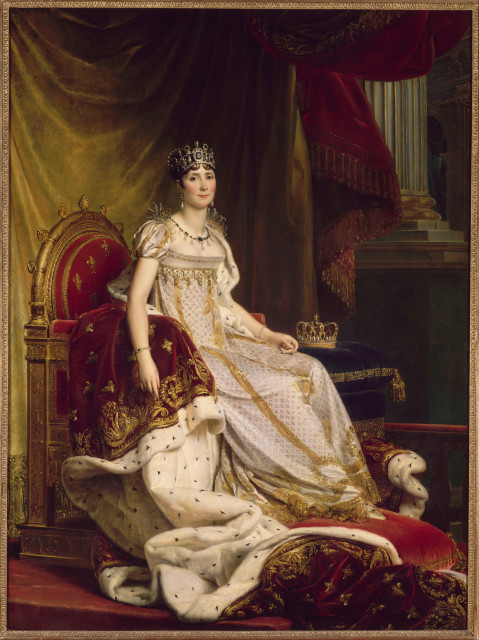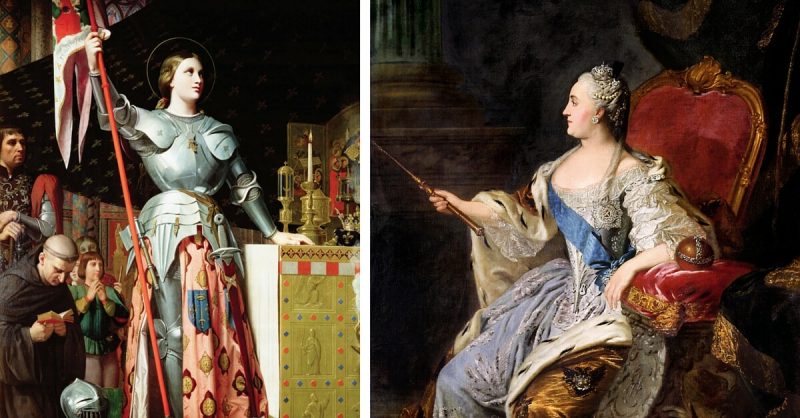Despite sharing the gender biases common to his time, Napoleon Bonaparte’s admiration for great men extended to a few women. Though he once said that “The greatest woman in the world is she who has borne the greatest number of children”, the women he drew attention to, and those he truly admired, found their strength in other areas of life. Not just wives and mothers, these were women who made a mark on politics and society.
The emperor once said that “For one woman who inspires us to do something good, there are a hundred who lead us into folly.” These are a few of that one percent whom he admired, and evidence that women could achieve greatness despite the views of men like Napoleon.
Ethelfled, Lady of the Mercians (died 918)
Napoleon’s admiration for Ethelfled is doubly surprising, given his views on the world. Not only was she a woman, but she was English, a political leader of France’s age-old enemy and Napoleon’s most implacable foes.
The eldest daughter of King Alfred the Great, Ethelfled was married to Ethelred, Lord of the Mercians. England in the late 9th and early 10th centuries was plagued by raids from Vikings and their descendants who had settled in the north. Ethelfled became a great military and political leader, taking a prominent role in Mercia’s defence even before her husband died in 911. She went on to rule in her own right until her death in 918. She built a string of fortresses to hold off the Danes, and led an expedition into Wales in revenge for the murder of an abbot. For a woman of her era, ruling at all was a remarkable accomplishment, and speaks to a boldness and strength of character that caught Napoleon’s imagination.
Joan of Arc (1412-1431)

It’s hardly surprising that Napoleon admired Joan of Arc, one of the greatest heroes of French history, and a leader in the fight against the English during the Hundred Years War. Joan was the perfect icon for a nation under attack on every front. Religious veneration of the warrior woman also made her politically useful – by celebrating her, Napoleon could help to heal the deep rifts the French Revolution had caused between Catholics and modernisers.
Joan’s story was an inspiring one – a woman of humble background whose charismatic presence led to a resurgence in French fortunes, but whose life was cut short at the hands of traitors and the English. Napoleon had a statue erected to her, a public monument to a national treasure.
Empress Maria Theresa (1717-1780)
During his time as Emperor, Napoleon kept a statue in his office of Maria Theresa, Empress of the Austrian Habsburg Empire from 1740 to 1780. Maria Theresa was a reformer in the same style that Napoleon aimed to follow – improving her dominions not through idealism but through efficiency. Undertaking a program of educational, financial and military reforms, she oversaw improvements in Austria’s agriculture, trade and armed forces, the last of which were seen up until then as outdated and inadequate. Her leadership reinvigorated Austria, turning it into one of the powerhouses against which Napoleon fought.
Napoleon’s praise of the Empress became especially notable in the lead up to his second marriage, to Archduchess Marie Louise of Austria. As he made a political marriage into the Austrian royal family, he had all the more reason to draw attention to their recent greatness.
Catherine the Great (1729-1796)

Napoleon found a woman to admire in the history of almost every country he fought against. In the case of the Russians that woman was still ruling during his rise to power. She was the Empress Catherine II, known as Catherine the Great.
Catherine’s rise to power had parallels with Napoleon’s. Like him, she reached a position of power alongside others, when her husband Peter III inherited the throne in 1762. And like Napoleon, her dominance was established through a coup, when she overthrew Peter six months later and became sole monarch.
The Empress’s successful rule was a fine example to point out to anyone who feared Napoleon’s dictatorship. An enlightened despot, she oversaw government reforms and a golden age for her empire and its nobility. Buildings were constructed in the classical style, the arts were supported by the monarchy, and, in a move Napoleon might have liked less, Catherine founded the Smolny Institute, the first establishment for women’s higher education to be funded by a European state.
As a man who considered his gender superior, Napoleon praised Catherine in a way that now sounds surreal, saying that she was so close to a great man’s accomplishments that she was “worthy to grow a beard on her chin”.
Madame de Staël (1766-1817)
Anne Louise Germaine de Staël-Holstein was not a figure from history but a contemporary of Napoleon, and one with whom he publically clashed. A writer and political commentator, Madame de Staël had hovered around the periphery of the upheavals that shook revolutionary France, commenting on them from a moderate reforming perspective. She was critical of the Napoleonic regime, and openly defiant of his orders. When banned from Paris and then from France, she pushed the boundaries, returning and pleading with others to intercede on her behalf.
Yet Napoleon’s distaste for de Staël was combined with recognition of her fine mind, and he said that she was “endowed with great talents, and possessing a very considerable share of wit.”
Joséphine de Beauharnais (1763-1814)
Napoleon’s greatest female inspiration was his own first wife, Joséphine. Despite infidelity on both sides, the couple clearly adored each other, Napoleon defying his family to marry the older widow. He wrote many love letters to her from campaign, and when he became Emperor, she became his Empress.

But Joéphine was unable to bear Napoleon, a child. For the stability both of his regime and of France Napoleon needed an heir, and so the couple divorced in 1810 so that he could remarry. The separation took place in a sad public ceremony, with both partners reading statements about the devotion they still felt for each other.
Sources:
- Zarzeczny, Matthew D. (2013), Meteors That Enlighten the Earth: Napoleon and the Cult of Great Men.
- Wikipedia – accessed 19 January 2016.
